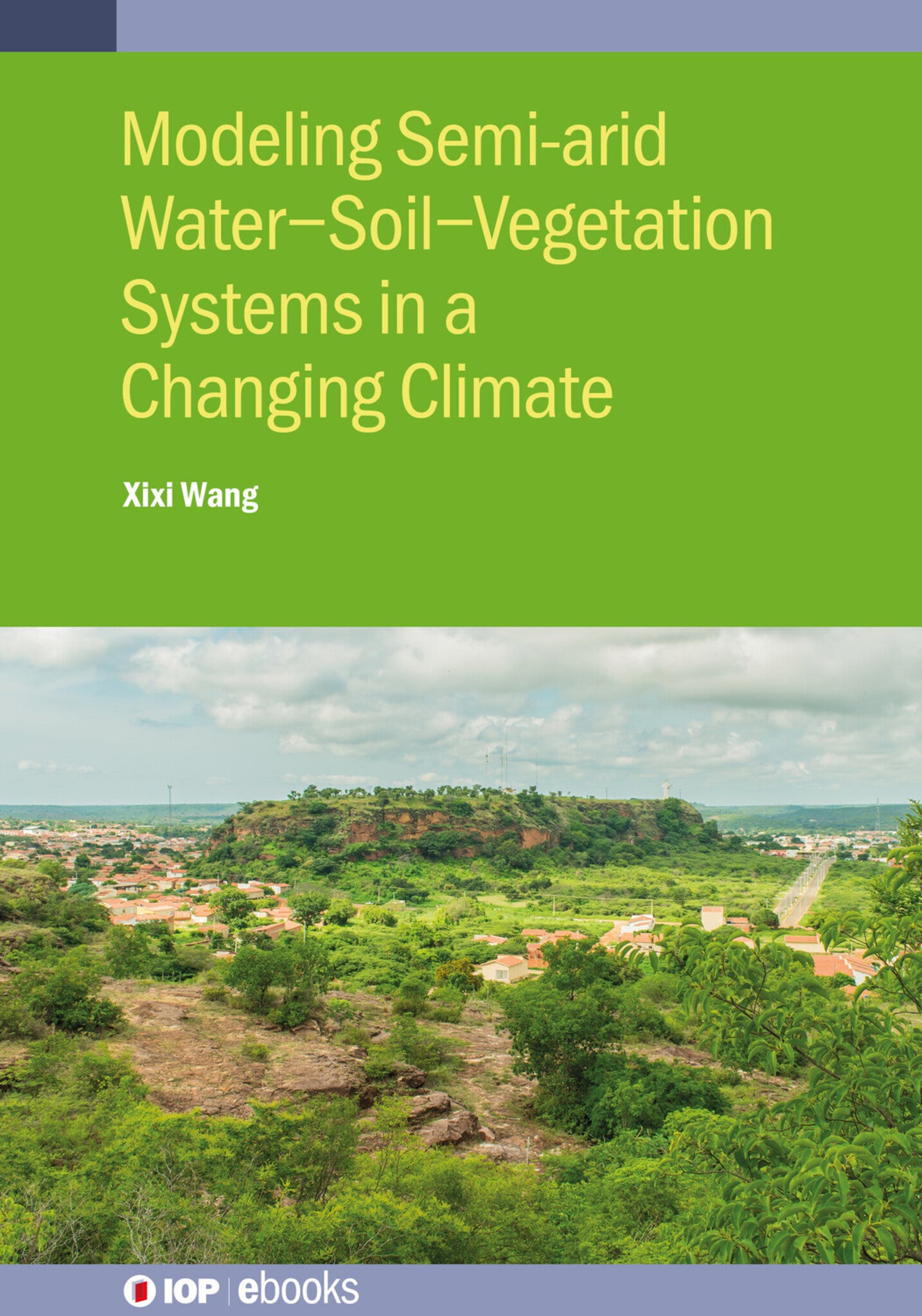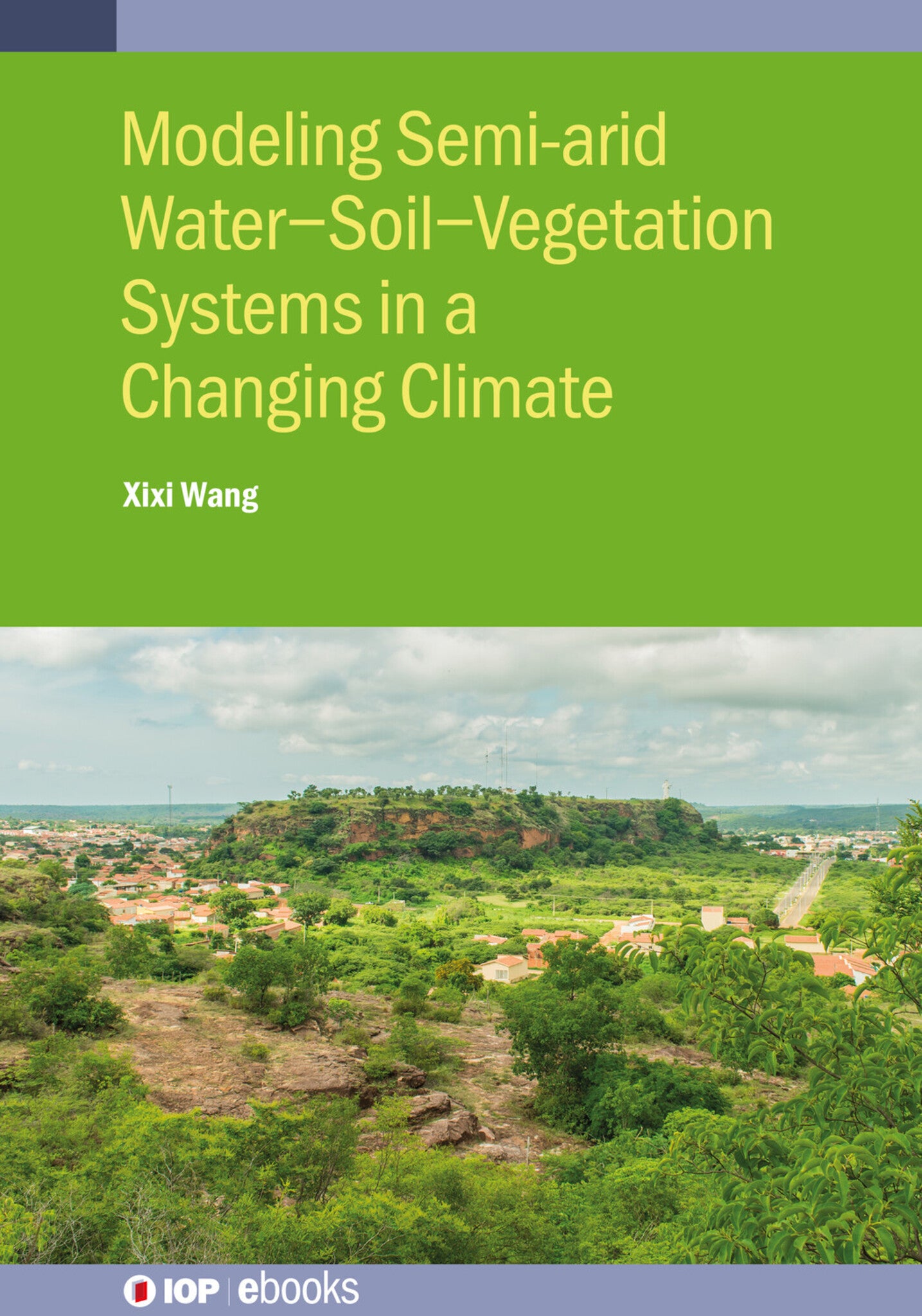We're sorry. An error has occurred
Please cancel or retry.
Modeling Semi-arid Water-Soil-Vegetation Systems

Some error occured while loading the Quick View. Please close the Quick View and try reloading the page.
Couldn't load pickup availability
- Format:
-
22 August 2022

Water-soil-vegetation dynamic nexuses affect, and are affected by, both human activity and climate change. Inappropriate land management practices can result in soil and vegetation degradation, which in turn will likely alter natural hydrologic processes, leading to more frequent and severe flooding and drought. In response, an altered hydrologic condition tends to prompt soil erosion by wind and water, which can cause further vegetation degradation or even loss. Such nexuses will likely become more interwoven in changing climate because the non-stationary climate can further deteriorate the already-altered hydrologic condition. So far, our understanding is incomplete regarding how such nexuses maintain or break equilibriums between water, soil, and/or vegetation in terms of eco-environmental resilience. This book: 1) conceptualises the interrelated physical processes of water-soil-vegetation systems; 2) introduces mathematical models for simulating the processes; and 3) develops a variety of modelling cases of selected systems across the world.
Key Features
- Includes both fundamental principles and practical applications
- Emphasizes semiarid water-soil-vegetation nexuses rather than individual processes
- Deciphers dynamics and interrelations of the physical processes of semiarid water-soil-vegetation systems
- Addresses impacts of climate change from practical management perspectives
- Maximizes readability by including illustrations, pictures, and annotated equations

SCIENCE / Earth Sciences / Hydrology, Hydrology and the hydrosphere, SCIENCE / Earth Sciences / Meteorology & Climatology, TECHNOLOGY & ENGINEERING / Environmental / General, Meteorology and climatology, Environmental management

Preface
Chapter 1 Overview
This chapter presents an overview of research gaps and status quo as well as the practical
application needs.
Chapter 2 Physical Processes
This chapter elaborates classifications of semiarid water-soil-vegetation systems,
interrelated physical processes of the systems, and driving factors for the processes.
Chapter 3 Conceptualizations
This chapter discusses approaches to conceptualize semiarid water-soil-vegetation
systems and related assumptions. Also, it presents the mathematical equations and
algorithms that govern the physical processes.
Chapter 4 Mathematical Models
This chapter introduces the existing models and their application conditions. In this
regard, a set of model selection criteria will be articulated. Also, this chapter presents how
to develop new algorithms to improve existing models.
Chapter 5 Case Studies
This chapter presents a variety of case studies to advance the relevant knowledge and
demonstrate how to model semiarid water-soil-vegetation systems. For each case study,
the scientific questions and hypotheses are formulated and answered in terms of the
modeling results.
Chapter 6 Overall Conclusions and Discussion
This chapter summarizes and discusses the findings from the previous five chapters as well
as highlights future research.



